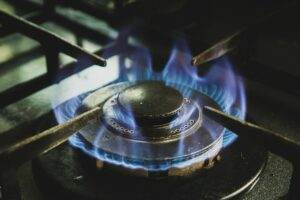[playht_player width=”100%” height=”90px” voice=”en-US-DavisNeural”]
The Ultimate Guide to Troubleshooting Your Refrigerator: DIY Repair Tips
A functioning refrigerator is an essential appliance in any household. It keeps our food fresh, prevents spoilage, and provides us with cold beverages on hot summer days. However, like any other appliance, refrigerators can experience problems and breakdowns. In this article, we will discuss common refrigerator problems and symptoms, as well as provide step-by-step guides on how to troubleshoot and repair these issues. Whether you are a DIY enthusiast or simply want to save some money on repairs, this article will provide you with the knowledge and tools necessary to fix your refrigerator.
Common Refrigerator Problems and Symptoms
Refrigerators can experience a wide range of problems, each with its own set of symptoms. Some common issues include a refrigerator not cooling properly, leaking water, making strange noises, or having a faulty water dispenser. These problems can be caused by various factors such as a malfunctioning compressor, a faulty thermostat, a clogged condenser coil, or a defective evaporator fan. By understanding the symptoms associated with these problems, you can easily identify the issue and take appropriate action.
For example, if your refrigerator is not cooling properly, you may notice that the temperature inside is higher than usual or that your food is spoiling quickly. If your refrigerator is leaking water, you may see puddles forming around the appliance or notice water dripping from the freezer compartment. Strange noises coming from the refrigerator can indicate a problem with the compressor or fan motor. By paying attention to these symptoms, you can diagnose the issue and proceed with troubleshooting and repairs.
Tools and Equipment Required for DIY Repair
Before you begin troubleshooting and repairing your refrigerator, it is important to gather the necessary tools and equipment. Some essential items include a multimeter for testing electrical components, screwdrivers of various sizes for removing panels and screws, pliers for gripping and manipulating wires, and a flashlight for better visibility in tight spaces. Additionally, you may need a condenser coil brush for cleaning the coils, a replacement thermostat or defrost heater if needed, and a bucket or towels for dealing with water leaks.
Each tool serves a specific purpose in the repair process. The multimeter allows you to test the continuity and voltage of electrical components, helping you identify any faulty parts. Screwdrivers are used to remove panels and screws that may be blocking access to the problem area. Pliers are useful for gripping and manipulating wires during repairs. A flashlight is essential for better visibility in tight spaces, especially when working behind the refrigerator. By having these tools on hand, you will be well-equipped to troubleshoot and repair your refrigerator.
Safety Precautions to Take Before Troubleshooting
Working with a refrigerator can be dangerous if proper safety precautions are not taken. Before you begin any repairs, it is important to ensure your safety and the safety of those around you. One potential danger is electrical shock, as refrigerators are powered by electricity. To avoid this risk, always unplug the refrigerator from the power source before starting any repairs. Additionally, be cautious when handling electrical components and use insulated gloves if necessary.
Another potential danger is injury from sharp edges or moving parts. When removing panels or accessing internal components, be mindful of any sharp edges that could cause cuts or abrasions. Use caution when handling fan blades or other moving parts to avoid injury. It is also important to protect your eyes by wearing safety goggles or glasses, as debris or chemicals may be present during repairs.
Lastly, be aware of potential gas leaks if your refrigerator uses a gas-powered cooling system. If you detect a strong smell of gas or suspect a leak, immediately ventilate the area and contact a professional for assistance. Gas leaks can be extremely dangerous and should not be handled by inexperienced individuals.
How to Check the Refrigerator’s Power Supply
One of the first steps in troubleshooting a refrigerator is to check the power supply. A refrigerator that is not receiving power will not function properly. To check the power supply, follow these steps:
1. Ensure the refrigerator is plugged in: Check that the power cord is securely plugged into a functioning electrical outlet. If it is loose or disconnected, plug it back in and ensure a snug fit.
2. Test the outlet: Use a multimeter to test the outlet for voltage. Set the multimeter to AC voltage mode and insert the probes into the outlet slots. If there is no voltage reading, there may be an issue with the outlet or circuit breaker.
3. Check the circuit breaker: Locate the circuit breaker panel in your home and check if the breaker for the refrigerator’s electrical circuit has tripped. If it has, reset it by flipping it to the “on” position.
4. Test the power cord: If the outlet and circuit breaker are functioning properly, use a multimeter to test the power cord for continuity. Set the multimeter to continuity mode and touch one probe to each end of the power cord. If there is no continuity, the power cord may be faulty and needs to be replaced.
By following these steps, you can determine if there are any issues with the refrigerator’s power supply and take appropriate action to resolve them.
Troubleshooting the Refrigerator’s Compressor
The compressor is a vital component of a refrigerator’s cooling system. If it is not functioning properly, the refrigerator will not cool effectively. To troubleshoot the compressor, follow these steps:
1. Check for power: Ensure that the refrigerator is receiving power by following the steps outlined in section
2. Listen for unusual noises: Turn on the refrigerator and listen for any unusual noises coming from the compressor. A clicking sound may indicate a faulty start relay, while a buzzing sound could indicate a problem with the compressor motor.
3. Test the start relay: If you suspect a faulty start relay, use a multimeter to test its continuity. Remove the start relay from the compressor and touch the multimeter probes to its terminals. If there is no continuity, the start relay is defective and needs to be replaced.
4. Check the compressor motor: If you suspect a problem with the compressor motor, use a multimeter to test its windings for continuity. Disconnect the power supply to the refrigerator and locate the compressor motor. Remove the wires connected to the motor and touch the multimeter probes to its terminals. If there is no continuity, the compressor motor is faulty and needs to be replaced.
By following these steps, you can identify any issues with the compressor and take appropriate action to repair or replace it.
Fixing a Leaking Refrigerator
A leaking refrigerator can be a frustrating problem that can lead to water damage if not addressed promptly. To fix a leaking refrigerator, follow these steps:
1. Identify the source of the leak: Determine where the water is coming from by inspecting the refrigerator’s interior and exterior. Common sources of leaks include a clogged defrost drain, a faulty water inlet valve, or a cracked water line.
2. Clear the defrost drain: If the leak is coming from inside the refrigerator, it may be due to a clogged defrost drain. Locate the drain hole at the back of the freezer compartment and use a pipe cleaner or small brush to clear any debris or ice buildup.
3. Replace the water inlet valve: If the leak is coming from behind or underneath the refrigerator, it may be due to a faulty water inlet valve. Disconnect the power supply and water source to the refrigerator, then remove the rear access panel. Locate the water inlet valve and disconnect the water supply line and electrical connections. Install a new water inlet valve and reconnect all connections.
4. Repair or replace a cracked water line: If the leak is coming from a cracked water line, you will need to repair or replace the damaged section. Turn off the water supply to the refrigerator and disconnect the water line. Cut out the damaged section and install a new section using compression fittings or a repair kit.
By following these steps, you can fix a leaking refrigerator and prevent further water damage.
How to Replace a Faulty Thermostat
The thermostat is responsible for regulating the temperature inside the refrigerator. If it is faulty, the refrigerator may not cool properly or may run continuously. To replace a faulty thermostat, follow these steps:
1. Disconnect the power supply: Before working on any electrical components, disconnect the power supply to the refrigerator.
2. Locate the thermostat: The thermostat is typically located inside the refrigerator compartment, near the control panel or temperature dial. Remove any panels or covers that may be blocking access to the thermostat.
3. Disconnect the wires: Carefully disconnect the wires connected to the thermostat. Take note of their positions or take a photo for reference when installing the new thermostat.
4. Remove the old thermostat: Unscrew or unclip the old thermostat from its mounting bracket and remove it from the refrigerator.
5. Install the new thermostat: Position the new thermostat in place and secure it to the mounting bracket. Connect the wires to their respective terminals, ensuring a secure connection.
6. Reassemble and test: Reinstall any panels or covers that were removed and reconnect the power supply to the refrigerator. Set the temperature to your desired setting and monitor if the refrigerator cools properly.
By following these steps, you can replace a faulty thermostat and restore proper temperature control in your refrigerator.
Troubleshooting the Refrigerator’s Evaporator Fan
The evaporator fan is responsible for circulating cold air throughout the refrigerator’s compartments. If it is not functioning properly, you may notice that certain areas of the refrigerator are not cooling as they should. To troubleshoot the evaporator fan, follow these steps:
1. Disconnect the power supply: Before working on any electrical components, disconnect the power supply to the refrigerator.
2. Locate the evaporator fan: The evaporator fan is typically located in the freezer compartment, behind a panel or cover. Remove any panels or covers that may be blocking access to the fan.
3. Check for obstructions: Inspect the fan blades for any obstructions such as ice buildup or debris. Clear any obstructions that may be preventing the fan from spinning freely.
4. Test the fan motor: Use a multimeter to test the continuity of the fan motor. Disconnect the wires connected to the motor and touch the multimeter probes to its terminals. If there is no continuity, the fan motor is faulty and needs to be replaced.
5. Check the fan motor for power: If there is continuity in the fan motor, use a multimeter to test if it is receiving power. Reconnect the wires to the motor and set the multimeter to AC voltage mode. Touch one probe to a wire connected to the motor and the other probe to a ground point on the refrigerator. If there is no voltage reading, there may be an issue with the control board or wiring.
By following these steps, you can troubleshoot and repair a faulty evaporator fan in your refrigerator.
Repairing a Faulty Defrost Heater
The defrost heater is responsible for melting any ice buildup on the evaporator coils during defrost cycles. If it is faulty, ice may accumulate and prevent proper cooling in the refrigerator. To repair a faulty defrost heater, follow these steps:
1. Disconnect the power supply: Before working on any electrical components, disconnect the power supply to the refrigerator.
2. Locate the defrost heater: The defrost heater is typically located behind a panel or cover in the freezer compartment. Remove any panels or covers that may be blocking access to the heater.
3. Test the defrost heater for continuity: Use a multimeter to test the continuity of the defrost heater. Disconnect the wires connected to the heater and touch the multimeter probes to its terminals. If there is no continuity, the defrost heater is faulty and needs to be replaced.
4. Replace the defrost heater: If the defrost heater is faulty, remove it from its mounting brackets and disconnect any remaining wires. Install a new defrost heater in its place, ensuring a secure fit and connection.
5. Reassemble and test: Reinstall any panels or covers that were removed and reconnect the power supply to the refrigerator. Monitor if ice buildup is melting properly during defrost cycles.
By following these steps, you can repair a faulty defrost heater and prevent ice buildup in your refrigerator.
How to Clean the Refrigerator’s Condenser Coils
The condenser coils are responsible for releasing heat from the refrigerator’s cooling system. If they are dirty or clogged, the refrigerator may not cool properly or may run continuously. To clean the condenser coils, follow these steps:
1. Disconnect the power supply: Before working on any electrical components, disconnect the power supply to the refrigerator.
2. Locate the condenser coils: The condenser coils are typically located at the back or bottom of the refrigerator, behind a panel or cover. Remove any panels or covers that may be blocking access to the coils.
3. Brush off loose debris: Use a condenser coil brush or a soft-bristle brush to gently brush off any loose debris or dust from the coils. Be careful not to bend or damage the fins of the coils.
4. Vacuum or blow out remaining debris: Use a vacuum cleaner with a brush attachment or compressed air to remove any remaining debris from the coils. Direct the airflow in the opposite direction of the coil fins to ensure thorough cleaning.
5. Reassemble and test: Reinstall any panels or covers that were removed and reconnect the power supply to the refrigerator. Monitor if the refrigerator cools properly and if the compressor runs less frequently.
By following these steps, you can clean the condenser coils and improve the cooling efficiency of your refrigerator.
What are common troubleshooting issues for refrigerators and how can they be resolved?
When dealing with refrigerator repair tips, common troubleshooting issues often include a faulty thermostat, clogged condenser coils, or a malfunctioning fan. To resolve these issues, it’s important to regularly clean the coils, check the thermostat settings, and ensure proper airflow around the fridge. Consulting a professional may be necessary for more complex problems. Additionally, many homeowners encounter whirlpool fridge common issues, such as water leaks or ice buildup in the freezer. Regularly inspecting the door seals and ensuring that the defrost drain is not clogged can help prevent these problems. If such issues persist, it may be time to consult a technician for a thorough inspection.
Fixing a Noisy Refrigerator
A noisy refrigerator can be a nuisance, especially if it disrupts your daily activities or sleep. To fix a noisy refrigerator, follow these steps:
1. Identify the source of the noise: Determine where the noise is coming from by listening carefully and inspecting the refrigerator’s interior and exterior. Common sources of noise include a faulty fan motor, a vibrating condenser coil, or a malfunctioning compressor.
2. Tighten loose components: If the noise is caused by loose components such as screws or panels, use a screwdriver to tighten them. Check all accessible areas of the refrigerator for any loose parts that may be causing the noise.
3. Insulate vibrating components: If the noise is caused by vibrating components such as the condenser coil or fan motor, use foam insulation or rubber pads to dampen the vibrations. Apply the insulation or pads to areas where the components come into contact with other surfaces.
4. Replace faulty components: If the noise persists after tightening and insulating, it may be due to a faulty component such as a fan motor or compressor. Follow the troubleshooting steps outlined in previous sections to identify and replace the faulty component.



